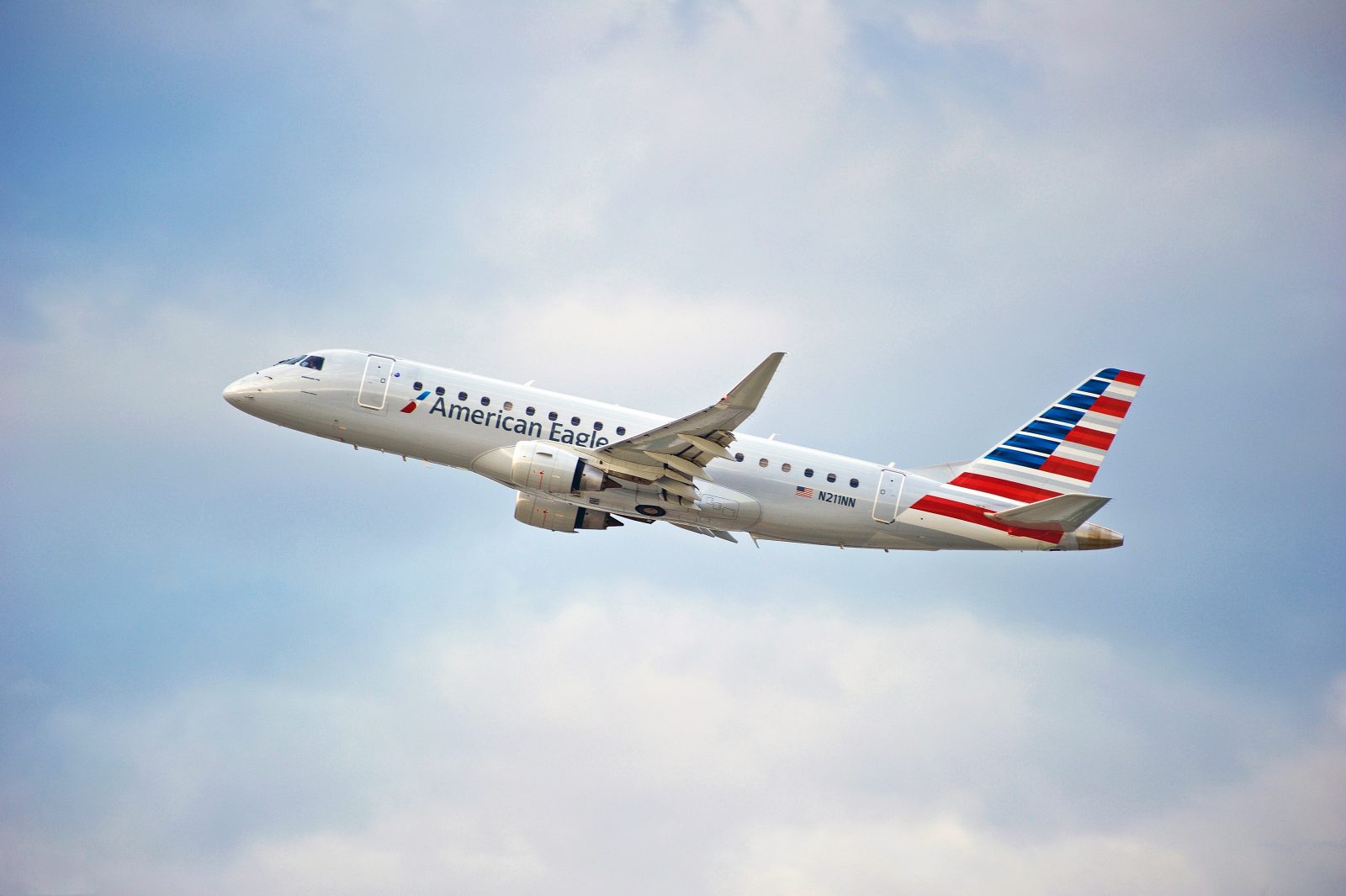
Regional flight attendants at a wholly owned subsidiary of American Airlines have voted overwhelmingly in favor of strike action after the carrier tabled an “insulting” pay offer after months of federal mediation.
The flight attendants work for PSA Airlines, which operates American Eagle-branded regional flights. Based in Dayton, Ohio, the airline operates more than 500 flights per day on behalf of American Airlines, although specific routes change frequently.
Regional flight attendants have traditionally earned a lot less than their peers at mainline carriers, but the Association of Flight Attendants (AFA-CWA) says they are now demanding wage rises that not only keep up with cost of living increases but also flight attendant pay at mainline airlines.
On Tuesday, the union announced that 99.2% of flight attendants who took part in the strike ballot, approved a potential walkout unless the current deadlock can be broken.
“Flight Attendants at PSA and other regional airlines across the industry fly the same routes and provide the same service as mainline Flight Attendants. It’s time they get paid like it,” commented Sara Nelson, international president of AFA-CWA, after the ballot results were published.
Sometimes described as the Most Powerful Flight Attendant in the World, Nelson continued: “Regional Flight Attendants deserve pay and benefits that reflect the value of their hard work.”
The union represents more than 1,300 flight attendants at PSA and has been in federally mediated bargaining with the airline since January trying to hammer out an updated contract.
After months of alleged stalling, the airline only submitted its economic proposal in July, and the union says it fell way below what it had been demanding.
Along with “double-digit” pay increases, the union also wants flight attendants to earn boarding pay and improvements to sick leave and work rules.
The news of further labor strife at American Airlines comes just days after the carrier celebrated the fact that its mainline crew members had voted to ratify a new five-year tentative agreement with pay rises of nearly 33% over the life of the contract.
The new contract also includes boarding pay and a slew of other lifestyle improvements, which took more than five years to negotiate.
Flight attendants had twice requested the right to go on strike after overwhelmingly supporting a walkout, but federal mediators continually pushed the two sides back into bargaining until a deal was reached.
In the end, American Airlines agreed to improve upon its initial offer of an 11% pay raise, which would have seen flight attendants at the Fort Worth-based carrier earn similar wages to what their peers at Delta Air Lines are paid.
Related
Mateusz Maszczynski honed his skills as an international flight attendant at the most prominent airline in the Middle East and has been flying ever since... most recently for a well known European airline. Matt is passionate about the aviation industry and has become an expert in passenger experience and human-centric stories. Always keeping an ear close to the ground, Matt's industry insights, analysis and news coverage is frequently relied upon by some of the biggest names in journalism.








They do not work as hard as mainline FAs. They don’t have to do a meal service most of the time and in my experience do a shortened drink service most times only going through F cabin one time then disappearing. The largest percentage of lazy attendants for flights have been on regional flights for me.
Respectfully disagree, regionals have to board and deplane several legs each day therefore have more hours of unpaid time. For example, Mainline could start at 9am and end at 5pm and since they have flown 6 of those 8 hours they get paid for six hours. On the other hand a regional starting at 9 finishing at 5 would be likely to have flow only 3-4 hours due to shorter legs and more layovers. So regionals then not only get paid fewer hours but also at a significantly lower pay rate. We do have meal services on some flights just like mainline does not have meal service on many flights., Regional does not have time to “disappear” like mainline may , as we have to get full service done in a shorter amount of time with only one FA in each cabin which could mean 11 first class pax for one FA whereas mainline can have as little as 4 first class pax for two FAs. Regional does the same job and many regional pilots actually make more than mainline pilots (new ones) for a couple of years. FAs should be paid the same across the board. At times there is even only 1 FA to handle all safety and health emergencies which is a lot for one persons . Approximately, 2/3 of all flights originate with a regional connection, therefore without regional mainline could not function.
The whole point of contracted regional flying is to leverage the lower labor cost structure of the regionals to enable “feed” to hubs for profitable mainline flights. This is why you don’t see RJ’s running point to point routes. They always connect to a hub. Eliminate the regoinals’ modest cost advantage on short and thin routes (again, almost solely due to labor costs), and there’s no longer any reason for an airline to engage in contracted regional airline flying at all. Union bosses know this, but don’t pass this information along to their voters.
The economic “boom times” in the US are over. Employees who keep issuing demands as if it were 2022 do so at their own risk.